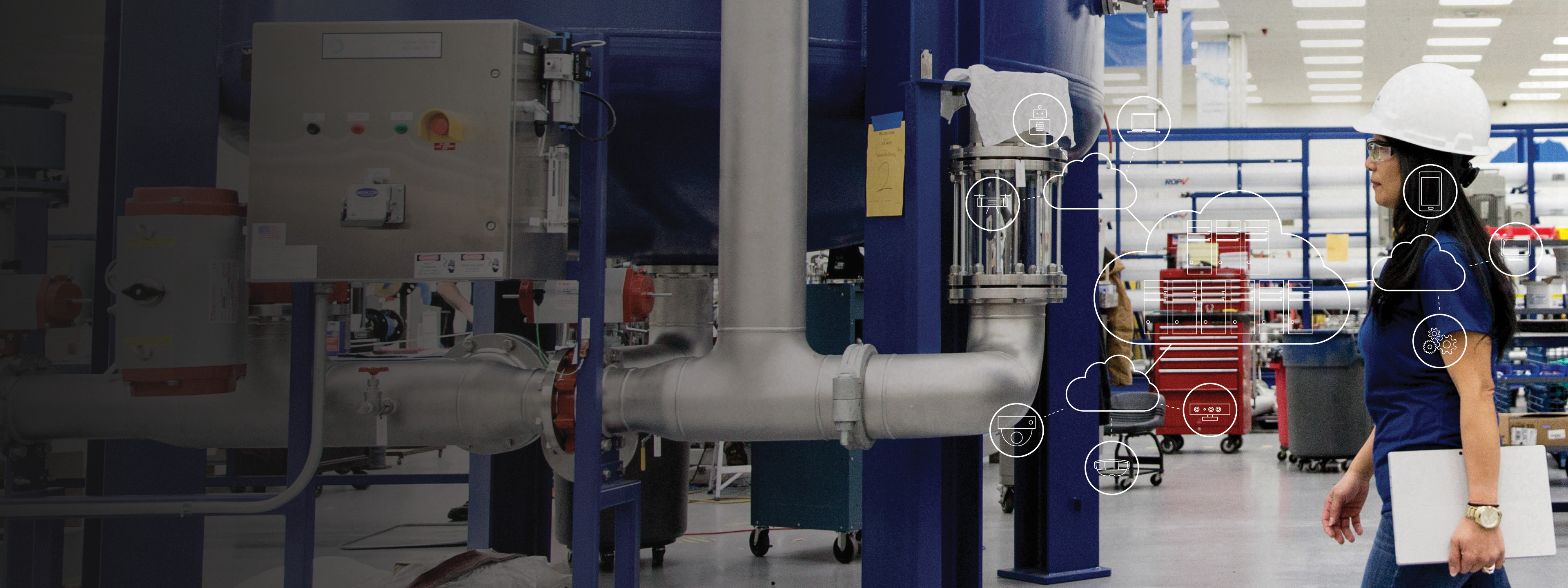Edge computing is where compute resources, ranging from credit-card-size computers to micro data centers, are placed closer to information-generation sources, to reduce network latency and bandwidth usage generally associated with cloud computing. Edge computing ensures continuation of service and operation despite intermittent cloud connections. Industries ranging from manufacturing to healthcare are eager to develop real-time control systems that use machine learning and artificial intelligence to improve efficiencies and reduce cost. We are exploring this new computing paradigm by identifying and addressing emerging technology and business model challenges.
A Brief History of Edge Computing
On October 29, 2008, we invited colleagues from academia and industry for a day-long brainstorming session about the future of cloud computing. Edge computing was conceived during those discussions. Attendees included Victor Bahl (organizer, Microsoft Research), Ramón Cáceres (AT&T Labs), Nigel Davies (Lancaster University, U.K.), Mahadev Satyanarayanan (Carnegie Mellon University), and Roy Want (Intel Research). Following this meeting, we published the first paper on this topic, in IEEE Pervasive Computing (November 1, 2009) titled: The Case for VM-based Cloudlets in Mobile Computing.
The blog Why a Cloudlet Beats the Cloud for Mobile Apps (December 13, 2009) was the first article to cover our ideas. In it are described two projects, Cloudlets, a joint project of Microsoft and Carnegie Mellon University; and MAUI (Mobile Assistance Using Infrastructure), a Microsoft Research project. In Cloudlets, we investigated fast virtual machine (VM) synthesis on the edge; in MAUI, we explored a .NET programming model for computational offloads to the edge. Many of the ideas we explored have withstood the test of time. For example, guarding against network disconnections, incorporating computing versus communications tradeoff, deciding which methods to offload and which to process locally. The papers describing Cloudlet and MAUI have been cited over 5,700 times. Click here for a colorful description of a ten year look-back
Since then, having made the case for edge computing in the research community (see Faculty Summit keynote), industry (see: Network World interview) and internally in Microsoft (see Intelligent Edge), we have been focusing on live-video analytics as the “killer” app for edge computing. You can read all about it in a separate project page.
Listen to Victor Bahl’s Podcast, A brief history of networking (and a bit about the future too),
where he shares some fascinating stories and gives an inside look at Edge Computing.
The Intelligent Edge
Microsoft product groups coined the term The Intelligent Edge. The Intelligent Edge is a capability that enables Microsoft customers to enjoy a seamless experience and compute capabilities wherever their data exists—in the cloud or offline. Microsoft is making it easier for developers to build apps that use edge technology, by open sourcing the Azure IoT Edge Runtime, which allows customers to modify the runtime and customize applications.

Learn more about the Intelligent Edge.
Recent Activity
- Keynote, Future of Information & Communication Conference (FICC) 2020 in San Francisco, CA (Victor Bahl, Mar. 5, 2020)
- Keynote, IEEE International Conference on Industrial Internet 2019 in Orlando, FL (Victor Bahl, Nov. 11, 2019)
- Invited Talk, CRA/CCC Visioning Activity: Wide Area Data Analytics, Washington DC, (Victor Bahl, Oct. 3, 2019)
- Keynote, The 1st International Workshop on Artificial Intelligence of Things, anchorage, Alaska, (Victor Bahl, Aug. 5, 2019)
- Keynote, 20th IEEE Symposium on World of Wireless, Mobile & Multimedia Networks in Washington D.C.(Victor Bahl, June 12, 2019)
- Keynote, Cyber-Physical Systems & Internet-of-Things Week 2019 in Montreal, Canada (Victor Bahl, April 16, 2019)
- Invited Talk at the ASPLOS 2019 workshop “Unlocking the Power of Edge Computing” (Ganesh Ananthanarayanan, April 14, 2019)
- Plenary on “AI/ML for Communication Networks” at the ICNC 2019 conference in Honolulu, HI (Victor Bahl, Feb. 19, 2019)
- “From Intelligent Cloud to Intelligent Edge” Workshop at UIUC CSL (Organizers: Shadi Noghabi & Yuanchao Shu, Feb. 7, 2019)
- Opening plenary at the 14th annual UIUC CSL Student Conference (Victor Bahl, Feb. 6, 2019)
- Working on the edge, Nature Electronics Q/A with Victor Bahl (Jan. 15, 2019)
- Arjmand Samuel, Principle Program Manager of Azure IoT Edge, gave the keynote at ACM/IEEE SEC 2018 (Oct. 26, 2018)
- Blog on the 10th anniversary of edge computing by Victor Bahl (Oct. 19, 2018)
- Shadi Noghabi from UIUC joins Microsoft Research and our project as a full time Researcher (Oct. 1, 2018)
- Ganesh Ananthanarayanan named program co-chair of ACM/IEEE SEC 2019 in Washington D.C (Sept. 9, 2018)
- Our VideoEdge paper accepted with impressive review scores in ACM/IEEE SEC 2018 (July 31, 2018)
- Check out our workshop: At the bleeding edge of Intelligent Edges in Redmond WA (July 27, 2018)
- Edge was a hot-topic in HotCloud 2018 in Boston, MA. Ganesh Ananthanarayanan was PC co-chair of this USENIX workshop (July 9, 2018)
- Rashmi Misra, GM IoT & AI Solution and Rushmi Malaviarachchi, Partner GPM, Windoes IoT to keynote at MSR’s upcoming workshop

